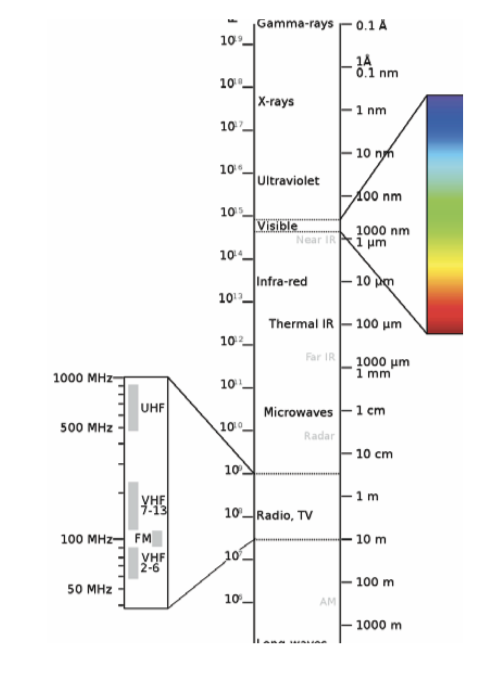Managing turfgrass in shade can be one of the more challenging aspects encountered by turfgrass managers everywhere. Unlike weeds, insects or diseases, you can’t simply spray something to correct it. Furthermore, who doesn’t love a good shade tree on a hot summer day? Privacy fences, homes or other structures, trees, shrubs, etc. all have the capacity to block sunlight from reaching turfgrasses and thereby creating shade. In this edition of Roosted in Research, we’ll explore the fundamentals behind shade, its impacts on turfgrass health, and recent research designed to determine exactly how much sunlight is needed to meet the needs of various turfgrass species. In order to understand shade, it’s important to first understand the sunlight that it’s blocking. Sunlight has properties of both particles and waves. Particles of light called photons contain energy that is delivered in various wavelengths which are defined by the distance between successive crests. The electromagnetic spectrum (Figure 1) includes the entire range of wavelengths of electromagnetic radiation delivered to the Earth’s surface by the sun. Unfortunately, not all of these photosynthetically active radiation (PAR), which is what drives growth in plants, makes up a very small amount of this spectrum. The entire 300 nanometer (nm) range of PAR from 400-700nm, when compared to the entire electromagnetic spectrum is equivalent to the width of a coin (a United States dime) when compared to driving from New York, NY to Los Angeles, CA. This tiny portion of light is all that’s useful to plants. As a result, one can imagine that it doesn’t take much additional shade from cloud cover, trees, homes, etc. to limit turfgrass growth in shade.

Turfgrasses, like all plants, require sunlight in order t supply energy to support photosynthesis, which literally means “synthesis using light”. As photosynthesis occurs, solar energy is used to drive the synthesis of carbohydrates and oxygen from carbon dioxide and water.In shaded environments, photosynthesis is reduced, which can result in decreased growth rates of turfgrasses, thinning, and even death. This is because plant survival dictates that net photosynthesis (carbon gains) exceed respiration (carbon losses) for the plant to continue to grow, produce new tissues, store carbon, etc. The point at which this pendulum swings in either direction is called the light compensation point, or the point at which photosynthetic CO² uptake exactly balances CO² release through respiration.
Generally speaking, cool-season turfgrasses reach light saturation, the point at which any additional sunlight cannot be effectively used for photosynthesis, at approximately 50% of full sunlight. By contrast, warm season turfgrasses require full sunlight to reach light saturation. This introduces a series of questions, such as: “How much full sunlight do various turfgrass species and varieties need to row?” “Is afternoon sun better than morning sun?” “Is four hours of shade/partial sun better or worse than two hours of full sun?”” how do we measure it?” and so on.
Light intensity varies by location, diurnal cycle, time of year, atmospheric conditions, cloud cover, shade, etc.
Sometimes this is measured as photosynthetic photon flux density (PPFD) in units of mol m -2 s -1, which provides an instantaneous value for how much PAR is reaching a leaf’s surface. However, the item of most interest to turfgrass researchers is how much photosynthetically active radiation (PAR) strikes a surface throughout the course of a day, season or year. This integrates PPFD into a term called the Daily Light Integral (DLI) and is much more useful for quantifying shade tolerance in plants. DLI also is useful because there are simple, inexpensive devices capable of measuring DLI that are commercially available to turfgrass managers.